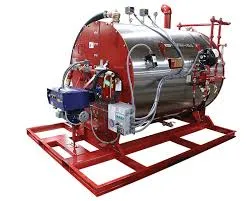
नोभ . 12, 2024 22:09 Back to list
hot water boiler heating system diagram
Understanding Hot Water Boiler Heating Systems A Comprehensive Overview
Hot water boiler heating systems play a crucial role in ensuring comfort and warmth in residential and commercial buildings. Understanding their functionality and layout can help homeowners and building managers make informed decisions regarding installation, maintenance, and energy efficiency.
At the core of a hot water boiler system is the boiler itself, which heats water typically using a fuel source like natural gas, propane, oil, or electricity. The heating process begins when the thermostat detects a drop in temperature, prompting the boiler to activate. Hot water is then produced and circulated through a network of pipes to provide warmth to various zones within the building.
The typical system diagram of a hot water boiler heating system consists of several key components. First, there is the boiler, which includes a combustion chamber and a heat exchanger. The combustion chamber is where the fuel is burned, producing heat. This heat is transferred to the water in the heat exchanger, raising its temperature before it is circulated through the system.
Next in the diagram is the pump, which plays an essential role in circulating hot water from the boiler to radiators or underfloor heating systems throughout the building. The pump ensures that heated water consistently reaches all the necessary areas, maintaining a comfortable environment.
hot water boiler heating system diagram

Radiators or baseboard heaters serve as the delivery points for heat within the building. As hot water flows through these devices, it radiates heat into the surrounding space, warming the air and surfaces. The cooled water then returns to the boiler, completing the cycle. This closed-loop system ensures efficient heat distribution while minimizing the loss of energy.
Another important component is the expansion tank, which accommodates the expansion of water as it heats up. This prevents excessive pressure buildup in the system, reducing the risk of leaks or damage. Additionally, various safety devices such as pressure relief valves and thermostats are included to monitor and control the system's performance, enhancing safety and efficiency.
Moreover, to optimize energy efficiency, many modern hot water boiler systems incorporate advanced controls and programmable thermostats. These technologies allow users to set specific heating schedules, reducing energy consumption during non-peak hours.
In conclusion, understanding a hot water boiler heating system and its components is vital for effective operation and maintenance. By familiarizing themselves with the system's layout, homeowners and facility managers can ensure optimal performance, enhance energy efficiency, and maintain a comfortable living or working environment. Regular inspections and timely maintenance are essential to prolong the lifespan of the system and prevent costly repairs, ensuring reliable heating for years to come.
-
Best Steam Boiler Design PDF Free Design Calculation & Diagram Downloads
NewsJun.10,2025
-
Hot Boiler Water Heater Efficient Heating Solutions for Home & Commercial Use
NewsJun.10,2025
-
Steam Boiler Safety Devices High-Quality Protection Valves
NewsJun.10,2025
-
Ultimate Steam Boiler Checklist for Safety & Efficiency
NewsJun.10,2025
-
Optimal Hot Water Boiler Temperature Setting Guide
NewsJun.10,2025
-
Effective Hot Water Boiler Chemical Treatment Protect & Maintain
NewsJun.09,2025
Related PRODUCTS






















